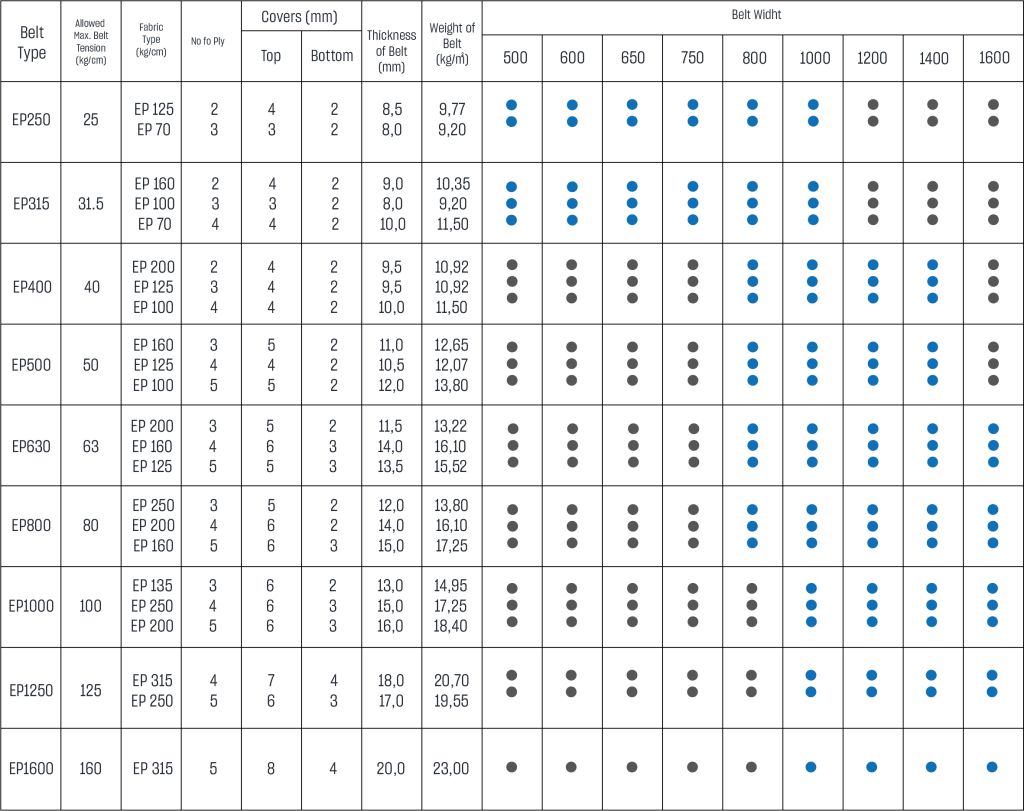Description of Conveyor Belt
Conveyor belts are the most important transportation vehicles used in the horizontal or inclined transportation of solid materials over long distances. It is used in many areas such as material transportation, loading, unloading, stocking and taking from stock, conveyor belts have common areas of use in daily life from industry to airports.
Benefits;
- Large transmission flow rate
- Very low energy requirement
- Low investment and low service costs
- Stable and trouble free transportation of products
- It is easy to use
- Less manpower and higher productivity
- Continuity
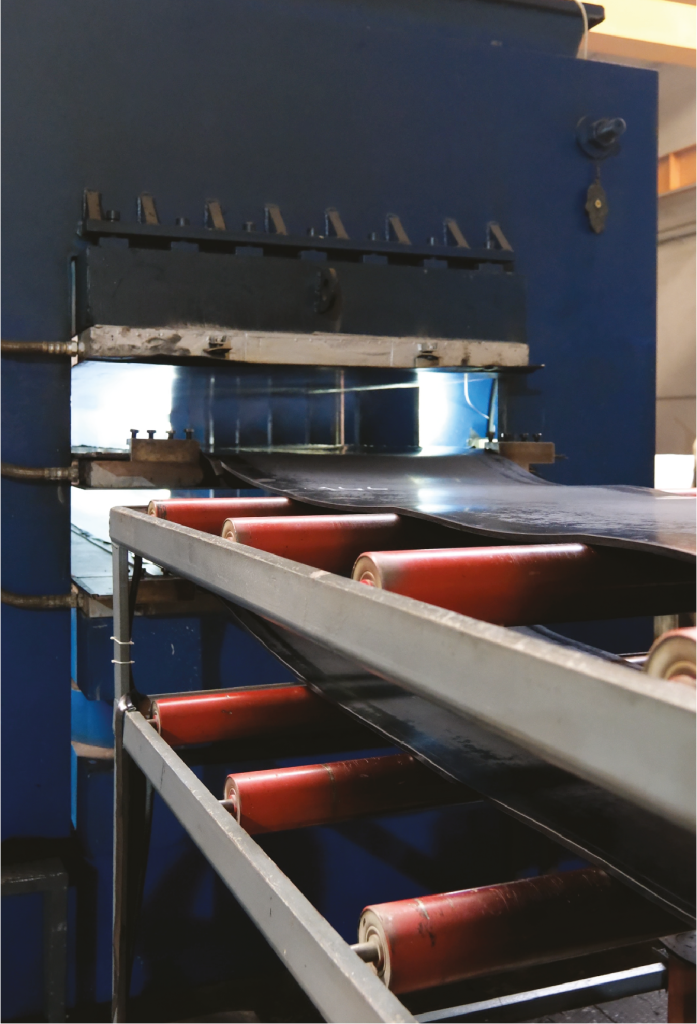
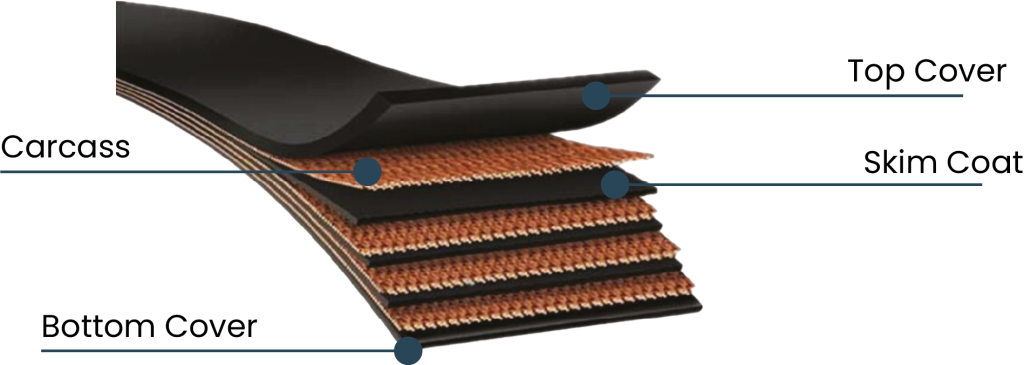
Cover Rubber – Covers of natural or synthetic rubber are used in conveyor belt construction in order to protect the base carcass from wear, impact, deterioration and other injurious influences. They are compounded to meet particular service conditions such as abrasion, oil, heat, flame, chemical resistant and antistatic, etc. Cover type, quality and thickness are matched to the service life of the belt involved. A specific cover formulation used in an individual belt construction is determined by the material to be carried and the environment in which the belt will operate.
Carcass – Carcass consists of one or more plies of textile fabric with rubber on each side to give adhesion and flexibility.The fabrics most commonly used are nylon, polyester and cotton, etc. The carcass of the belt provides the tensile strength necessary to move the loaded belt and absorb the impact of the impinging material being loaded onto the conveyor belt.
Rubber Skim Coat – An extra layer compound between plies is called skim coat. Skims are important contributors to internal belt adhesions, impact resistance, and play a significant role in determining belt load support and troughability. The proper skims increase flex life and create a more elastic link so that plies flex without separation; improper skims can adversely affect belt performance and lead to ply separation.
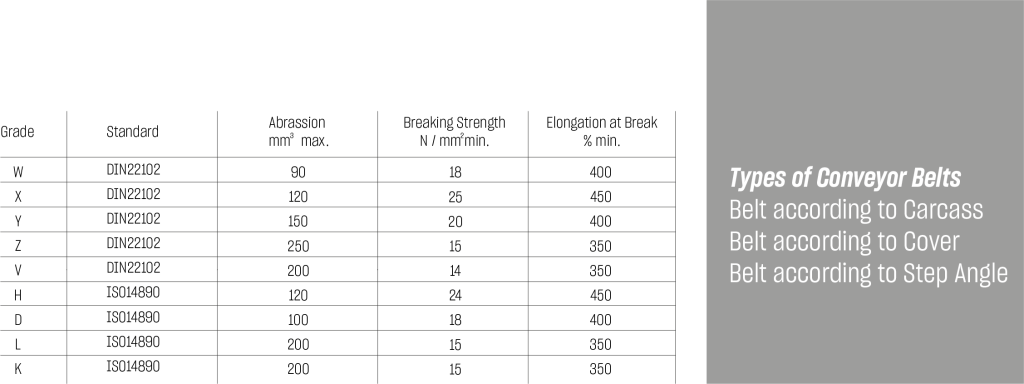
Technical Details
Tips for Selecting Conveyor Belt
Please fill out and forward to us the use condition details from us for right belt selection
Do not use conveyor belts for transporting bulk or unpacked foodstuff
Observe the following instructions in to stocking conveyor belts
Points to Note in Handling and Storage Conveyor Belt
Belts are rolled on wood or steel drum and wrapped with polypropylene
The belt rolls should be fixed on the cargo bed of a truck. Pay special care not to damage them with forks of lift trucks
Ensure the belt is not damaged by inserting a shaft in the roll holes as shown in the figure when you lift them by a crane
When keeping stand-by belts or used belts, pay attention to the following points to prevent aging or damage from prolonged storage:
Keep the belts away from direct sunlight
Keep the belts away from wind, rain, or moisture
Keep them in a dry, even place
Keep them away from harmful objects like fire, oil, chemical or organic gas
Fix belt rolls to prevent them from rolling
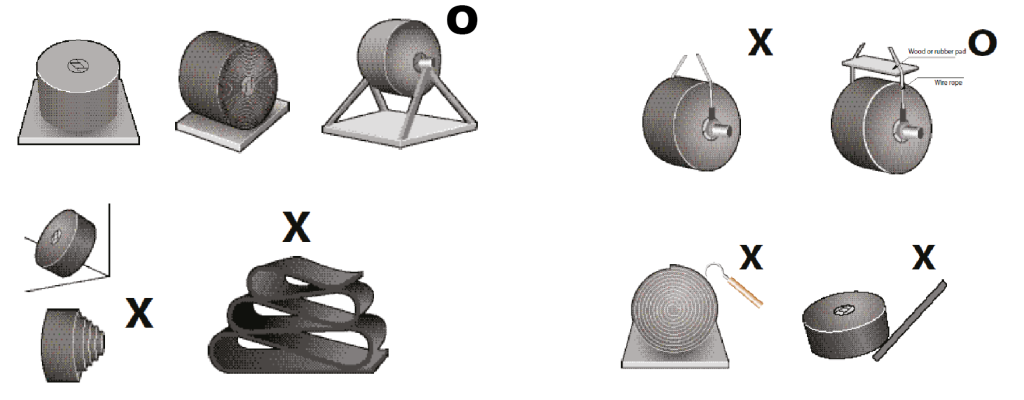
Calculation of Conveyor Belt Roll Diameter
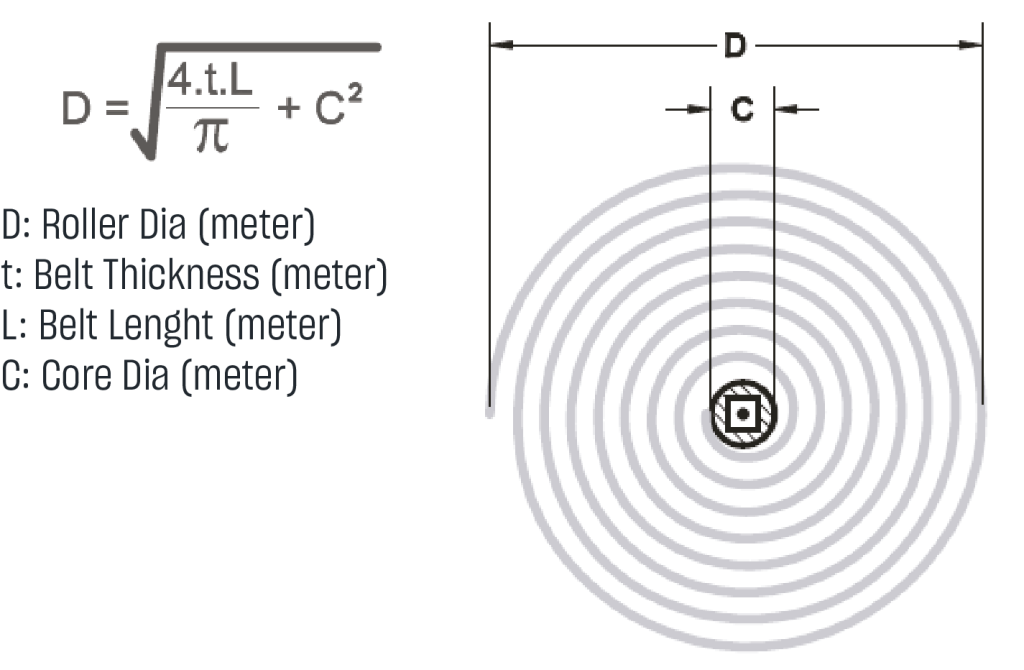
Recommended Belt Series
